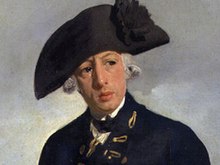 |
| Ole Worm |
Ole Worm Born, 1588
His name is pronounced "Ola Vorm" and he was the son of the mayor of Aarhus, Denmark. He had a very good education for those times -- he studied first in Germany, and then moved to Copenhagen, where he taught classes in Greek, Latin, medicine, and science. He also studied early Scandinavian literature, and was considered quite an expert on runic texts. He was the royal physician to King Christian IV, but he also treated the poor, even staying in Copenhagen during outbreaks of the plague.Worm's greatest claim to fame, however, was his contribution to the physical sciences. He believed that knowledge was best achieved by systematic investigation and detailed observation of the natural world. He collected quite a store of curiosities, including taxidermed animals and fossils. After his death Frederick III acquired them and they became part of the collection of the Royal Kunstkammer.
Some of Ole Worm's most startling discoveries were:
 |
| Lemmings: not created from air, after all. |
2. There was no such thing as a unicorn. Reports of the miraculous properties of the unicorn's horn were actually about the horn of the narwhale. Worm conducted experiments on pets to see if, as according to current belief, the powdered horn of the narwhale was an effective remedy for poisoning. (The pets recovered, so Worm deduced that it was.)
3. The Bird of Paradise, did, in fact, have feet like regular birds. Specimens that had been brought to Europe had had their feet removed by native traders for other uses. The birds were generally believed to have no feet and to spend their entire life in the air.
 |
| Captain Arthur Phillip |
The First Fleet Leaves for Australia, 1787
On May 13, 1787, 11 ships left Great Britain under the command of Captain Arthur Phillip. 1487 people left, including 778 convicts. They were bound for Botany Bay, Australian, to create a new prison colony.Besides the convicts and crew, the ships carried agricultural implements and supplies, medical equipment, leg irons and chains, 5000 bricks and thousands of nails. There was also a house for the governor, prefabricated and packed flat.
The ships took a somewhat indirect route in order to benefit from the trade winds and currents. They stopped first at Santa Cruz in Tenerife, and then across the Atlantic to Rio de Janeiro. They stayed a month at Rio de Janeiro, making repairs and taking on fresh provisions. By October 13 they reached the Cape of Good Hope and took on additional supplies, livestock, and plants and seeds.
 |
| Entering Botany Bay |
Phillips took a party and went exploring for a better location, finally settling on the area around Port Jackson. On January 26th the company moved to Port Jackson, and made the first permanent British settlement in Australia. It was named Sydney, in honor of the British Home Secretary, Thomas Townsend, Lord Sydney.
No comments:
Post a Comment